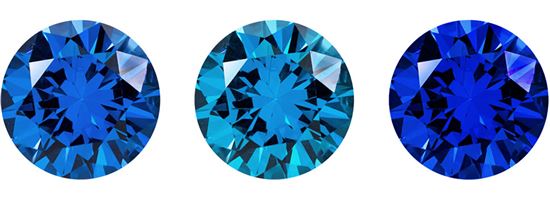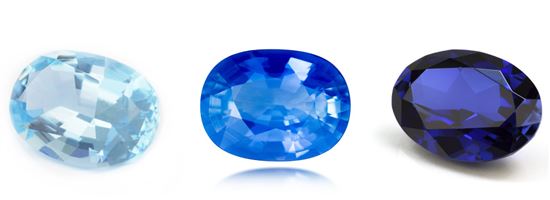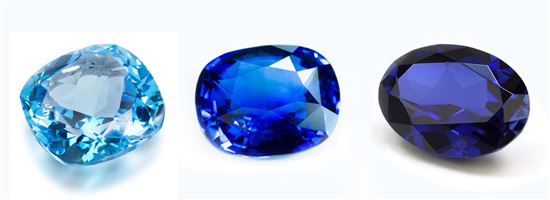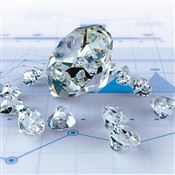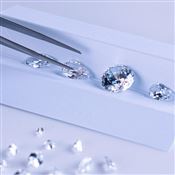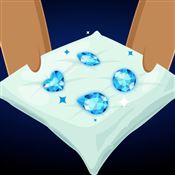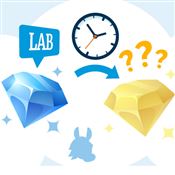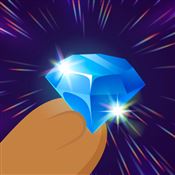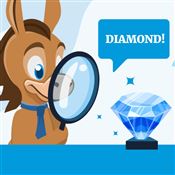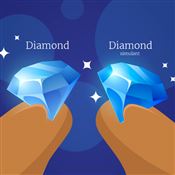Sapphire Prices: How Pricing Works
Sapphires are a beautiful, affordable alternative for engagement rings. But pricing is more complicated than diamonds. Learn how to determine quality and value.
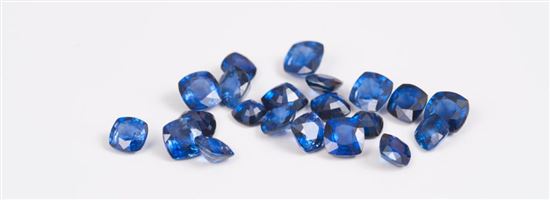 |
In the market for a sapphire but don't know how much it costs? The price of sapphire is based on factors like color, clarity, size, and origin.
Read on to learn more about what affects their value.
Factors That Affect Sapphire Pricing
A 1-carat sapphire can cost anywhere between $200 and thousands of dollars.
Diamonds are priced according to a standardized grading system of the 4Cs (cut, color, clarity, and carat). Unlike diamonds, many more factors determine the value of sapphires. The best price for you also depends on what you personally like. Because there are so many variables, it's hard to give a ballpark figure.
We'll go over the main factors that affect sapphire pricing, and illustrate with some real examples. For each factor, consider your personal taste. This will give you some idea of how much you can expect to pay.
- Unlike diamonds, sapphires are most valued for their color, color intensity, and color purity.
- Most sapphires are heat treated. Natural, unenhanced gem-quality sapphires are very rare.
- Sapphires aren't given clarity grades like diamonds. Just look for an eye-clean stone.
- Even the origin of the sapphire affects pricing.
Color Is King
Color has the biggest impact on the prices of sapphires.
When we think of sapphires, the color blue comes into mind. But sapphires actually come in a rainbow of colors with different intensities and hues. All of these come into play to determine the stone's value.
There are a 3 main things to look for when it comes to color.
- Hue
This is the basic color of the sapphire. Sapphires come in any combination of blue, pink, yellow, green, black, and even white (which can mimic a diamond).Most often, stones will have mixed color. For example, blue sapphires often have purple and green secondary colors. The closer the sapphire is to a true blue, the more valuable it will be.
Below are examples of violet blue, greenish blue, and a more true blue stone.
![]() The most precious sapphire color is what's known as Padparadscha. These stones are very rare and have a peachy-pink color. Pink sapphires are also very valuable, with many being even more expensive than blue sapphires.
The most precious sapphire color is what's known as Padparadscha. These stones are very rare and have a peachy-pink color. Pink sapphires are also very valuable, with many being even more expensive than blue sapphires. - Saturation
This refers to how pure and intense the color is. Stones with lower saturation will be diluted with gray or brown. Sapphires with Vivid and Strong saturations are the most valuable.![]()
Caption: Examples of light, moderate, and vivid saturation
- Tone
This is how light or dark the color is. Too light will look like there's not enough color, while too dark will look inky and not bright.The most desirable is a Medium to Medium-Dark tone. The stone will have beautiful color without being too dark and becoming opaque.
![]()
Caption: Examples of light, medium, and dark tone
The most valuable sapphires are Medium to Medium-Dark with pure Vivid color without any gray or brown.
Unfortunately, sapphires aren't given color grades (unlike the standard D-Z grade for diamonds). So it's up to you to decide how vibrant or true you think the color is. What matters most is that you like the color. If you fall in love with a lighter colored stone, then go for it and save some money while you're at it.
Here are some unique, rare sapphires that fetch a very high price:
- Cornflower blue sapphires: The most sought-after blue sapphires for their intense, true royal blue color.
- Kashmir sapphires: Sapphires mined from Kashmir with tiny silk inclusions that give them a velvety appearance.
- Padparadscha sapphires: Very rare sapphires with a peachy-pink color.
- Color-changing sapphires: Change color under different lighting, usually from blue to violet or reddish-purple.
- Star sapphires: Certain inclusions in the stone create a star pattern.
Other Color Factors to Watch Out For
Besides the hue, saturation, and tone, here are a couple of other factors to look for:
- Transparency
More transparency means more light passes through the stone and it will be more brilliant. Opaque stones will look duller. - Color Zoning
It's common for sapphires to have uneven color. Cutters usually try to cut the stone in a way to display the most concentrated color. A stone with clear, uneven color greatly reduces the value.
Sapphire Cut
While diamonds are prized for the most precise cut for maximum brilliance, sapphires are cut to display the most color.
Sapphire cutters usually focus on:
- Bringing out the best color
- Reflecting back the most light
- Retaining the most carat weight
- Minimizing visible inclusions
Unlike diamonds, sapphires are not given a cut grade. So you'll have to judge the cut of the stone yourself. Here are some problems to look for.
- Window
If the stone is cut too shallow, you may see a large window in the center where the light leaks out, instead of being reflected back. This will look like a clear area with no color. - Extinction
If the stone is cut too deep, there may be areas of extinction with no or little light return. This will look like dark or black areas. - Face-up Symmetry
Because sapphires are cut for the best color, a lot don't have perfect proportions. Symmetry is important for the overall beauty. - Offset Cutlet
This is when the bottom part of the stone is unsymmetrical, and the point is not at the center. This can create problems with light reflection and face-up appearance.
Since sapphires aren't given a cut grade, it's important to examine the stone so you can see how it interacts with light. If you're buying online, make sure to use a website with actual videos of the stone (such as Leibish & Co. or James Allen Jewelry).
Sapphire Clarity
Unlike diamonds, sapphires are not as valued for flawlessness. There is no standard clarity grading chart for gemstones. Usually, sapphires aren't even given a clarity grade.
Most natural sapphires have a lot of inclusions because of how they're formed. This is an accepted fact. Natural sapphires with exceptional high clarity are very rare and expensive.
All it matters is that you can't see the flaws with your naked eye. Many jewelers evaluate their sapphires and grade them as "eye clean" or "included." Look for "eye-clean" sapphires for the best balance between price and beauty.
Carat Weight
Of course, the carat weight of the stone will affect how much it costs. For 2 stones with the same color, intensity, clarity, cut, and treatment, the bigger stone will cost exponentially more.
High quality sapphires over 2 carats are quite rare. Over 5 carats are very rare and can be considered one of a kind.
Because there are so many variables that go into pricing sapphires, carat isn't the main determining factor. A small sapphire with true vivid color and high clarity can cost a lot more than a large, poor-quality sapphire.
For an eye-clean blue sapphire with strong color, here's about what you can expect:
| Carat | Price |
|---|---|
| 0.50 carat | $150–$600 |
| 1.00 carat | $1,000–$2,000 |
| 1.50 carat | $1,500–$3,000 |
| 2.00 carat | $3,000–$6,000 |
Treated or Untreated
Sapphires are not rare gemstones. However, true natural, high-quality, untreated sapphires are very rare.
The majority of sapphires sold are heat-treated to enhance the color and clarity and make them more gem-quality. Only about 1% of all sapphires mined are high enough quality to be used in jewelry. So natural untreated sapphires are very rare and will be priced at a premium.
For example:
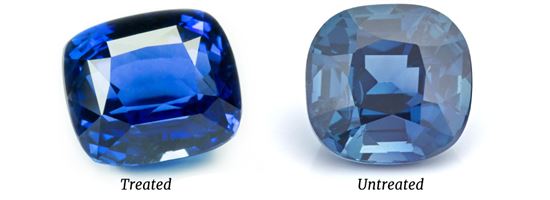 |
The untreated one (right) costs a lot more than the heat treated one (left).
If you're just looking for the prettiest stone for your ring, you probably won't care if it's been treated or not. Unless you're a fine gem collector, you don't have to place so much value on this.
Origin
Where the sapphire comes from also has a big impact on price. Sapphires are mainly mined from a few regions:
- Australia & Tanzania
- Cambodia
- Myanmar
- Thailand
- Ceylon (Sri Lanka)
- Kashmir
- Madagascar
- Nigeria
- U.S.A.
Sapphires mined from Myanmar, Sri Lanka, and Kashmir will usually be automatically priced higher than other origins. These regions are known for producing higher-quality sapphires, and thus are more desirable.
It doesn't really matter where your sapphire comes from as long as you like the color. Paying for origin is only worth it if you want the bragging rights.
Bottom Line
As you can see, there are so many variables that goes into determining the value of a sapphire. Color is the most important factor, with the most valuable sapphires having a pure, vivid color. But really, it all depends on what you personally like.
Since sapphires don't have a standardized grading system like diamonds, you'll have to use your own judgment when shopping. Make sure to look for an eye-clean stone with a good amount of brilliance. This will ensure that you get a beautiful, bright stone no matter what color you choose.
Write to Anna G at feedback@creditdonkey.com. Follow us on Twitter and Facebook for our latest posts.
Note: This website is made possible through financial relationships with some of the products and services mentioned on this site. We may receive compensation if you shop through links in our content. You do not have to use our links, but you help support CreditDonkey if you do.
|
|
|
